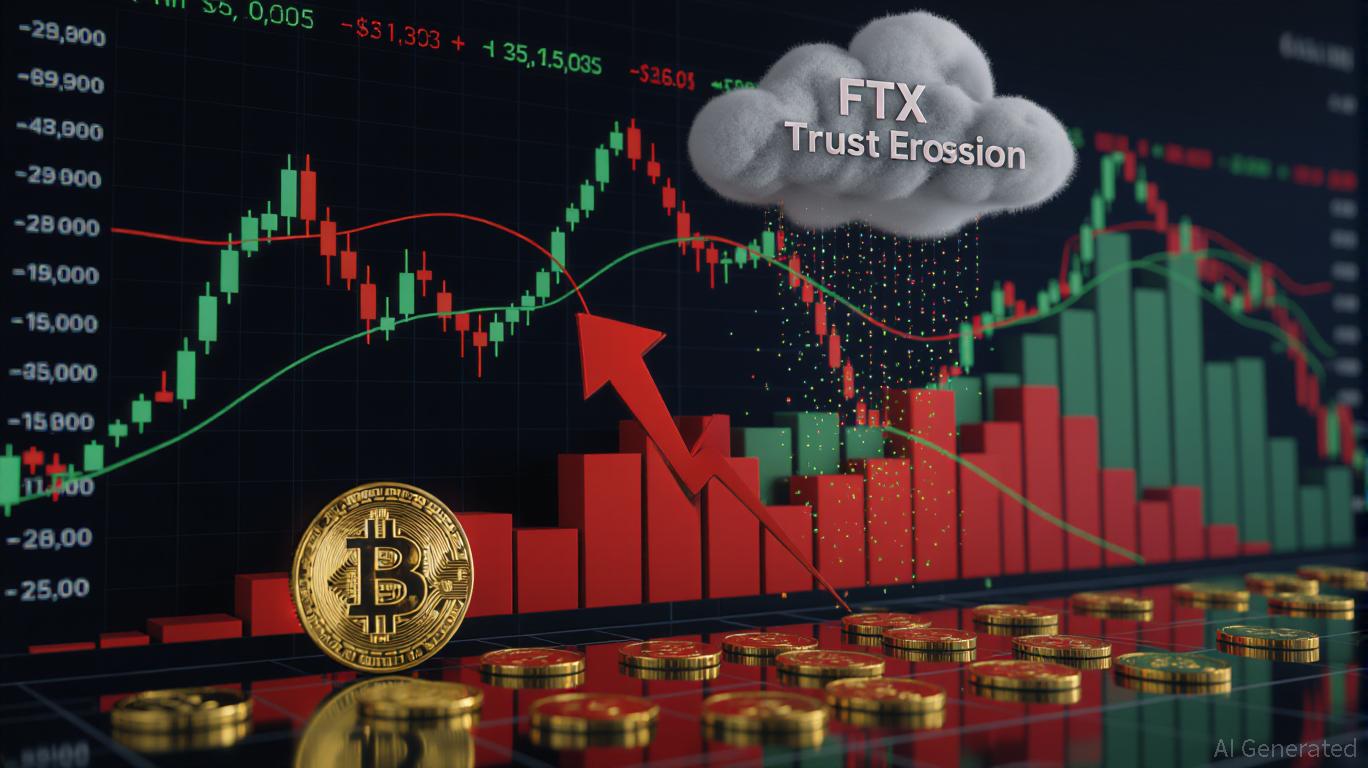Bitcoin News Today: The Major Transition: Bitcoin Mining Companies Evolve into Leading AI Infrastructure Providers
- Bitcoin miners shift to AI infrastructure as margins shrink due to rising energy costs and post-halving challenges, with companies like Core Scientific and Cipher Mining repurposing data centers for AI workloads. - Major contracts, including a $5.5B, 15-year AWS deal and a $9.7B Microsoft agreement, highlight AI’s 25x higher revenue per megawatt compared to Bitcoin mining, driven by stable demand from tech giants. - The pivot reshapes market dynamics, with AI-focused miners outperforming Bitcoin peers as
Industry experts and analysts say that Bitcoin mining companies are rapidly shifting their focus to artificial intelligence infrastructure as profit margins shrink due to rising energy prices and the effects of the latest halving. What was once a specialized approach has now become a widespread industry transformation, with firms such as
This strategic change comes after Bitcoin’s halving in April 2024, which cut block rewards and caused average hash prices—daily earnings per terahash—to fall below $0.05 by mid-2025, representing a 60% decrease from pre-halving figures, as reported by

“Miners have evolved beyond just Bitcoin—they now serve as digital infrastructure providers,” one analyst observed, pointing out that seven of the ten largest miners now earn income from AI or high-performance computing (HPC) ventures, according to
This transformation is altering the competitive landscape. Companies like TeraWulf and Core Scientific are prioritizing AI growth over expanding Bitcoin hashrate, with TeraWulf’s $3.7 billion Fluidstack partnership alone expected to generate $1.85 million per MW each year, according to
This industry pivot is also changing how companies are valued. Investors are now more interested in contracted AI megawatts and revenue per MW than in hash rates, with AI-centric miners like Core Scientific and TeraWulf outperforming those focused solely on Bitcoin, as
Industry watchers suggest that this shift may slow the growth of Bitcoin’s hashrate, as more power is allocated to AI GPU clusters. This development, together with increasing demand from tech giants like Microsoft and Google, has already pushed AI’s energy consumption in the U.S. beyond that of Bitcoin mining, according to
---
Disclaimer: The content of this article solely reflects the author's opinion and does not represent the platform in any capacity. This article is not intended to serve as a reference for making investment decisions.
You may also like
Revenue and Growth: Diverging Approaches in Global Fiscal Policies
- Brazil's tax-exempt bonds strain public finances, costing $11.3B annually amid rising issuances. - Japan unveils $110B+ fiscal stimulus for AI, semiconductors , and energy, potentially reaching $133B. - UK abandons income tax hikes, opting for threshold adjustments to address £35B budget gap. - Mexico's Supreme Court upholds $1.8B tax claims against billionaire Salinas Pliego's firms. - Global trend shifts toward targeted fiscal tools over broad tax hikes amid economic pressures.

The Unexpected Bitcoin Plunge in November 2025: Causes Behind the Drop and Future Prospects for Cryptocurrency Investors
- The November 2025 BTC crash resulted from Fed tightening, lingering FTX trust erosion, and institutional outflows. - Fed's hawkish liquidity controls and inflation focus created toxic conditions for Bitcoin's low-rate-dependent market. - FTX's unresolved $7.1B payouts and $20B institutional exodus since 2022 amplified panic selling through trust deficits. - Crypto investors must now wait for Fed policy clarity and prioritize transparent platforms with regulatory compliance.

Bitcoin Updates Today: Fed Navigates Uncertainty as December Rate Cut Remains Unclear
- Market expectations for a Fed rate cut in December dropped to 52% from 95% a month ago, reflecting deepening policymaker divisions. - Hawks like Collins emphasize inflation risks, while doves argue easing is needed to avoid restrictive policies amid weak labor data. - A government shutdown delayed critical economic reports, complicating decisions as structural shifts demand nuanced policy responses. - Bitcoin gains were capped by reduced cut odds, while broader markets remain sensitive to Fed signals on

Solana News Update: Solana’s Fast Network Draws $1.5 Billion in Stablecoin Growth as USDC and USDT See Significant Increases
- Circle mints $500M USDC on Solana , leveraging its 4,000 TPS speed and $0.002 fees to boost DeFi liquidity. - Solana's 2.4M active addresses and 83M transactions highlight its appeal as Ethereum's high-throughput rival. - Tether simultaneously issues $1B USDT on Ethereum , contrasting with Solana's retail-friendly low-cost model. - Institutional adoption grows via Solana Staking ETF and major firm participation, challenging Ethereum's upgrades. - $1.5B stablecoin surge reflects demand for cross-chain sta
